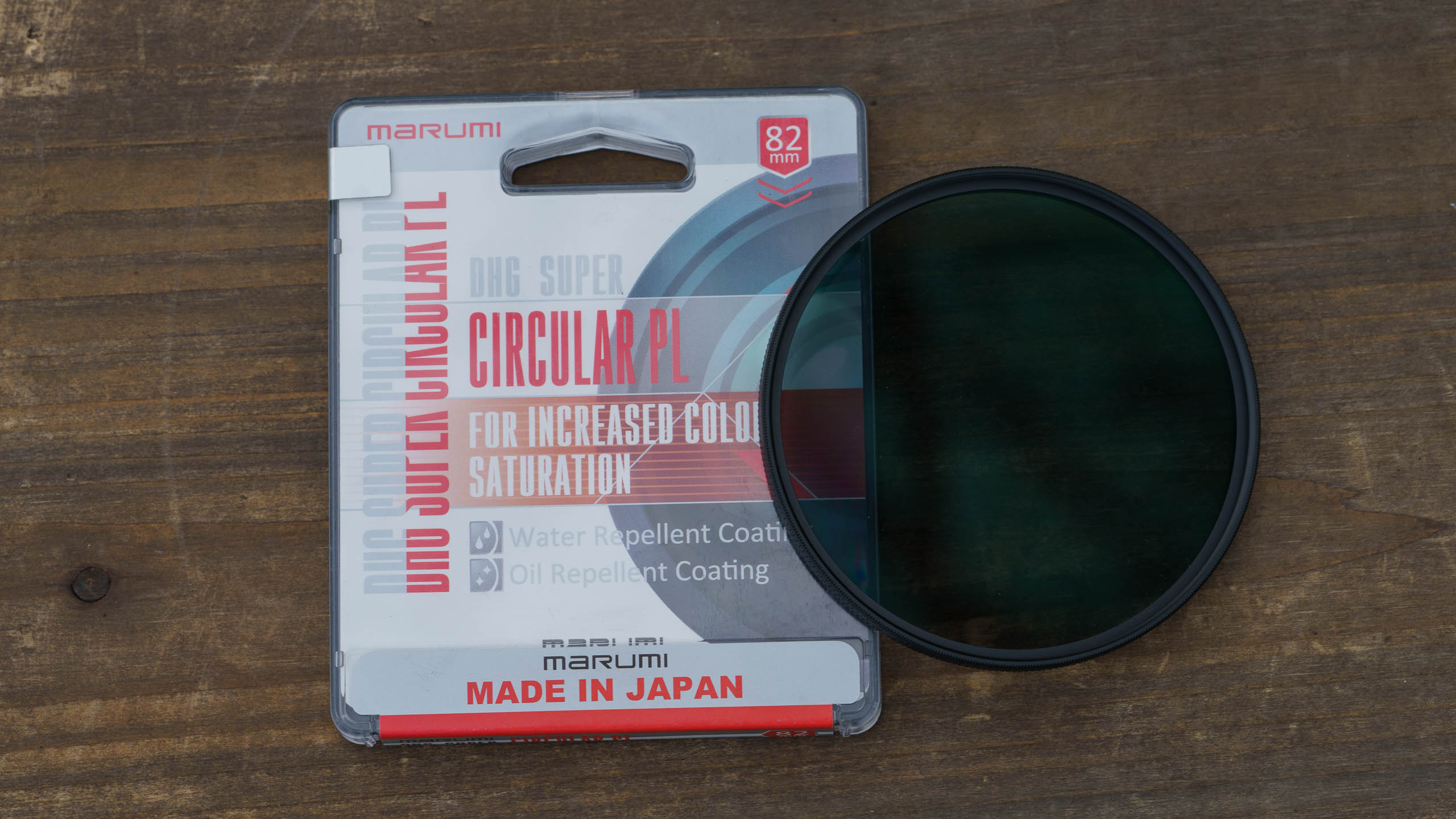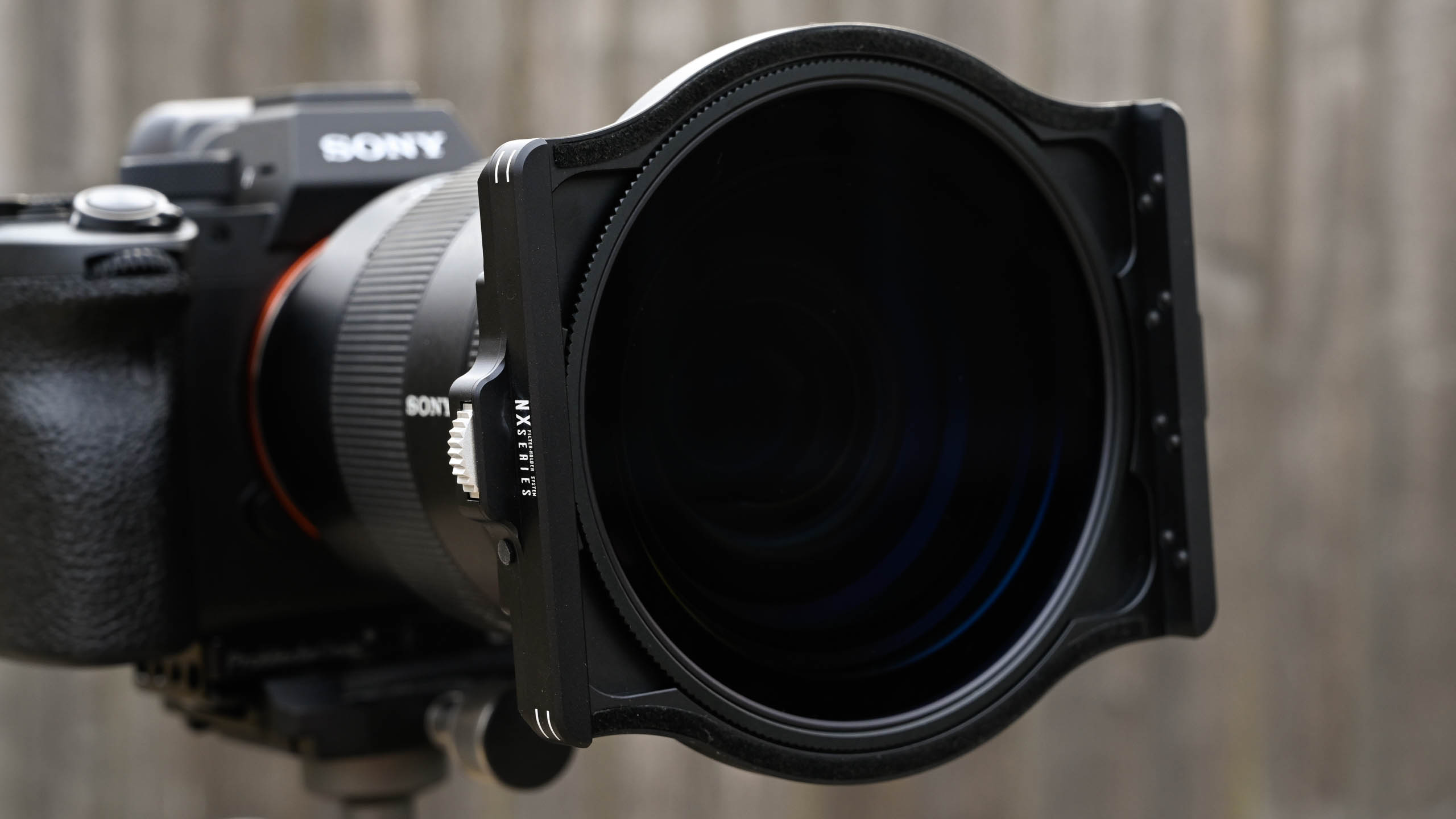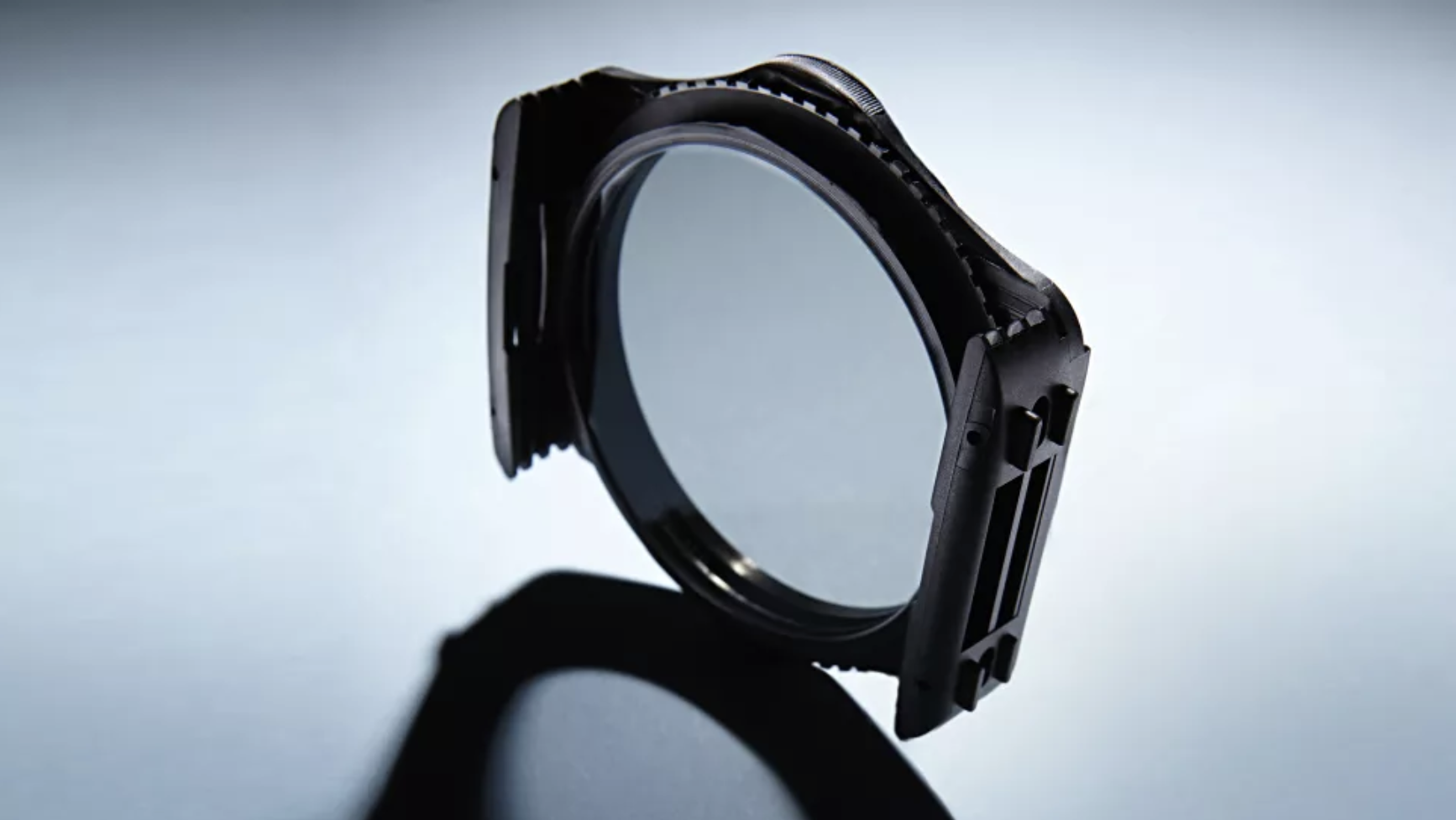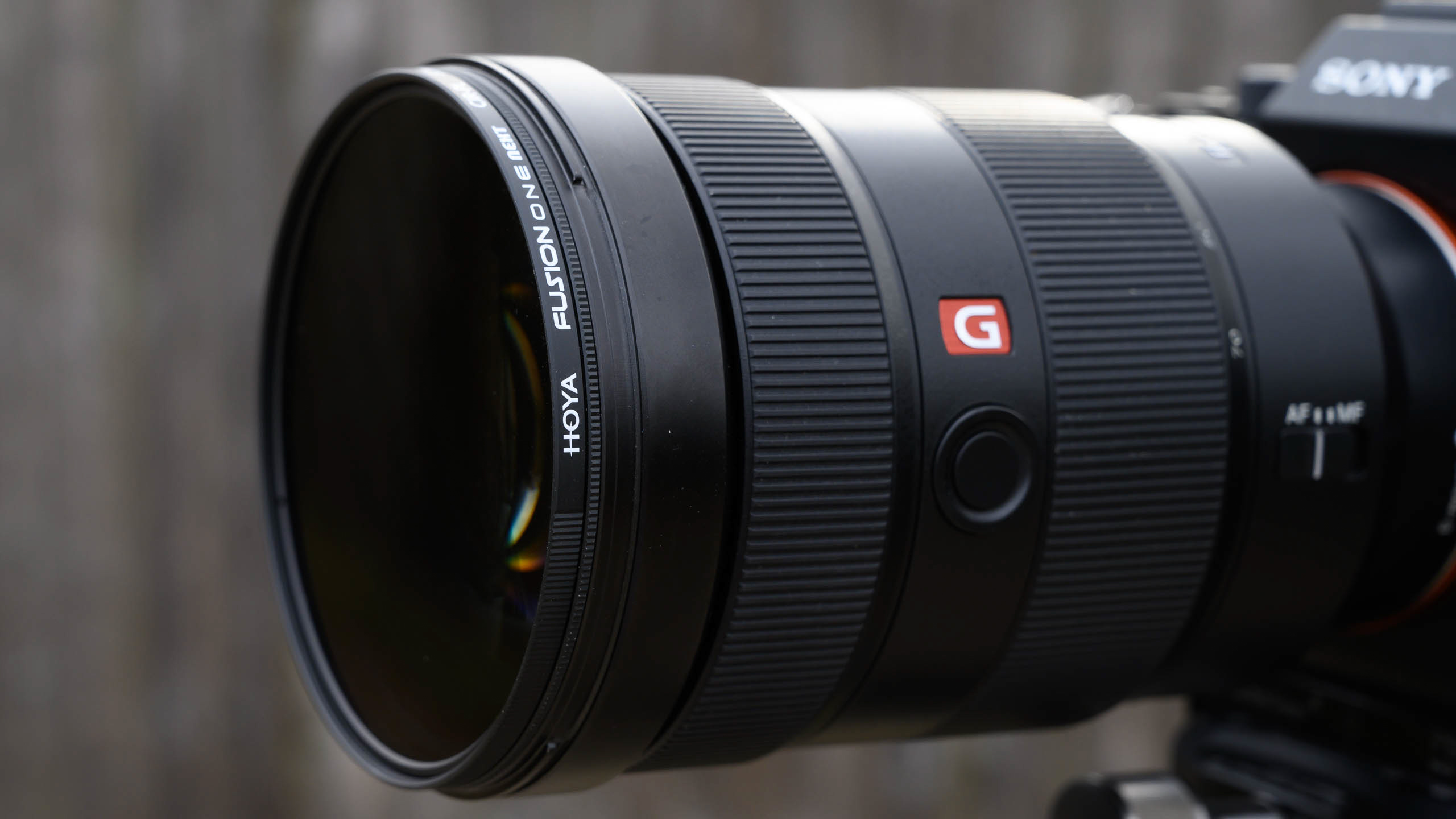What Is A Better Camera Filter, Circular Polariser Or Nd Filter?
The best polarizing filters in 2022: top circular polarizers for photographers

With i of the best polarizing filters, you lot're much more than equipped for outdoor photography. Polarizing filters, or polarizers as they're commonly known, are ideal for boosting the vibrancy and dissimilarity in your images. They reduce unwanted reflections in water and glass, as well as enhancing the color of skies by cutting out haze. Information technology'southward an result that can't exist replicated easily in post-processing, which is why an cheap polarizer is such a good buy for pretty much any photographer.
A polarizing filer works by cutting out certain low-cal waves, thereby reducing the level of glare and haze from the sunlight. They come up into their own specially when you're photographing big bodies of water similar rivers, lakes or the ocean. Cutting out reflections allows yous to capture the character and colour of the water with much more than depth, improving the overall quality of the paradigm.
Fifty-fifty if you're using some of the best photo editing software (opens in new tab), this is a difficult outcome to accomplish digitally. Much like the best neutral density filters (opens in new tab), polarizers accept stayed enduring popular in the digital age because they practise something unique that happens at the moment of capture.
There are a few good tips for getting the best out of a polarizer. We'd recommend shooting with the sun at a 90º angle for best results, and remember that some polarizers like the newer LEE Elements range allow you lot to command the intensity of the result, so you can make adjustments depending on the conditions. For a few more helpful tips, click to spring straight downwardly to our section on what to look for in the best polarizing filters.
Here are our recommendations for the best polarizing filters you can get right now.
• ten things you need to know about photographic camera filters!
All-time polarizing filters
The all-time polarizing filters

Marumi offers a slightly confusing four distinct ranges of round polarizers, each with dissimilar drinking glass/coating combinations. The DHG Super range gets a water and oil-repellent blanket, which works well, easily beading away droplets and resisting fingerprints, albeit non quite as well every bit the Lee Polariser.
All the same, DHG Super polarizers don't incorporate high light transmission glass, every bit establish in Marumi's EXUS polarizers, which may explain why our sample filter restricted light past half-a-stop more than the all-time filters on test. Otherwise, optical performance is splendid, with no drib in image sharpness, and no sign of color casts or vignetting. The latter is mainly thank you to a slim frame design that's a whisker under 5mm thick. It screws very smoothly into your lens' filter thread, and the polarizer'due south front end element rotation is also slick.
With filter thread diameters available in all common sizes from 37mm through to 95mm (and even an elusive 105mm option, if you tin find it), at that place'due south a DHG Super polarizer for near whatsoever lens, and most are very well priced, in the Uk at least.
See our full Marumi DHG Super Circular PL review (opens in new tab)

For a long time, LEE Filters were merely bachelor equally part of a holder system, requiring an extra attachment to get on and off the front of the lens. However, in 2021, the visitor finally relented and came out with the Elements series – round filters designed to be rapidly attached and detached from a lens without the need for a holder.
Made from premium glass, the Elements Polarizer also has a useful aligning ring to allow you to fine-tine the polarizing upshot. Information technology won't fit all lenses equally its minimum thread size is 67mm, simply it covers a range that includes a lot of eyes. If you don't heed a slightly higher request toll, we would say that the Elements Polarizer is absolutely worth it.
See full Lee Filters Elements Circular Polariser review (opens in new tab)

The NX-Serial is Cokin'due south latest slot-in filter organization, taking 100mm wide filters. The NX CPL has been specifically designed to fit into this frame organisation - so is best suited to those who want a range of unlike filters to utilise with their cameras, rather than just a polarizer. In our tests, we were impressed that the smart, depression-profile aluminum holder is compatible with wide lenses (upwards to an EFL of 16mm). Cokin sells the NX-Series Holder and CPL filter separately, merely they are also bachelor together in a number of kits, including the NX-Series Starter kit which includes 72mm, 77mm and 82mm adapter ring plus a 100x100mm frame and a 100x143.5mm frame for holding Cokin Nuance square or rectangular filters (or other filters of the same size and 2mm thickness).

Lee'due south Polariser works in conjunction with the LEE100 100mm filter arrangement. This is based around the LEE100 holder that attaches to your lens via a suitably sized adapter ring. The polarizer then clips to the front end of the holder, leaving space for additional square filters to slide in backside.
This organisation means the polarizer is large at 105mm in diameter, allowing information technology to encompass numerous different lens diameters. It's also very like shooting fish in a barrel to rotate, and it clips into the holder much more hands than trying to screw a conventional polarizer onto your lens. Notwithstanding, the clip-in mechanism is surprisingly hard to disassemble again, requiring more squeeze than is comfortable. Another consideration is the combined filter, holder and adapter ring price, which is significant.
Just that said, y'all get what yous pay for. Lee's glass has no negative impact on prototype sharpness, it only reduces light transmission by merely over one-terminate, and you needn't worry about any sign of color casts. This is besides easily the best filter for resisting fingerprints and repelling water, with aerosol beading away perfectly. Lee fifty-fifty includes a loftier quality zippered pouch in which to store the filter.
See our full Lee Filters LEE100 Polariser review (opens in new tab)

In the world of polarizers, y'all actually don't need to drop big bucks to become a decent filter. Hama's entry can be had for very little money, still it offers solid performance and comes in an extensive filter bore range of 37-82mm.
You can forget about fancy glass and coatings though, as water and fingerprints stick to the front end element annoyingly well, making information technology difficult to clean. In that location is at to the lowest degree an AR anti-reflective coating to enhance low-cal transmission, and it works, every bit we were able to shoot at the aforementioned exposure settings equally with form-leading filters like the Lee Filters polarizer, equating to a i ⅓-stop low-cal loss. A 6% drop in image sharpness is technically the worst performance on this list, but it'due south all the same negligible, and the polarizer doesn't innovate any colour casts.
Physically, Hama's polarizer stands out from the crowd, non least because it's the thickest polarizer here at 6mm - not great if plan to use it with an ultra-wide optic, where slight vignetting could be noticeable. There's also a removable pin to aid you rotate the front chemical element. It'southward non particularly useful in practiced weather, simply is a handy feature when it's cold and y'all're wearing gloves.

Tiffen's hugely reliable filters are known among photographers for existence a practiced affordable option, and so it goes for the firm's Circular Polarizer range. These filters are cheaper than most, and come in a skilful range of sizes from 25mm right up to 92mm. At that place's a slight cool cast to them, but it's not too pronounced, and light transmission and sharpness are generally very good. The high-quality ColorCore Drinking glass construction is what gives the filters their excellent overall quality.
They're a niggling thicker than some of the others on this list, but not enough to really be a problem.

The well-established Cokin P-series range of filters is known for being affordable and offer a broad range of artistic furnishings, including polarizers. Nearly of the range is foursquare or rectangular, fitting into the mount via a P-series filter holder. This filter holder attaches to your lens with an adaptor ring, which is bachelor for lenses with zipper threads of betwixt 48mm and 82mm.
The filter holder has three slots for filters. One fits circular filters, such as the Cokin P164 polarizer. Nevertheless, at that place are besides two central slots that fit square or rectangular shaped filters as well. The knurled outer edge of the P164 polarizer is designed to ergonomically allow easy rotation.
While the Cokin P-series is affordable, we did feel that the plastic holder felt a little flimsy in comparison to the Lee Filters holder, or the newer Cokin NX Organization. We also establish that there was a slight warm color cast and some muddiness in darker areas.

B+W'south premium XS-Pro round polarizers come in a huge range of thread diameters to suit lenses from tiny Micro 4 Thirds eyes through to beefy big discontinuity super-teles. A cheaper 'F-Pro' range is also available, but at the time of writing, the cost difference isn't vast.
Filter thickness is 4.5mm when fitted - not quite equally wafer-thin equally Cokin'southward Nuances round polarizer, simply you're all the same unlikely to encounter whatsoever vignetting. An advantage of the marginally thicker blueprint is that the rear filter element's frame is slightly easier to grip when screwing the filter onto your lens. The front element is besides easy to rotate, being silky smoothen, and in that location's a secondary thread on the forepart for stacking multiple filters.
B+Due west's HTC (Loftier Transmission Circular) drinking glass is claimed to consequence in minimal light loss of 1-i.5 stops, and we plant this to exist spot-on. Optical quality is also starting time-class, as nosotros couldn't discover whatsoever color bandage, plus the filter has no effect on lens sharpness.
Less impressive is the MRC Nano coating, however, which is supposed to resist water and fingerprints, only barely chaplet h2o away better than a budget filter. It does at to the lowest degree help with filter cleaning, as water can exist wiped abroad quite easily.
We could forgive the lackluster water/fingerprint resistance, if it wasn't for the top-terminate pricing of these filters, which is hard to justify when compared to equally capable, however cheaper rival glass.

Designed to update the original Fusion One series, Hoya's Fusion Ane Side by side filters are premium, loftier-quality polarizers for those demanding the best in terms of optical quality. Synthetic from 18 coated layers of drinking glass to provide ultra-loftier lite transmission, these filters also have a low-profile filter ring to brand them useful even for super-wide shooting. They have a front end screw too, so you tin stack the polarizer with a UV or protection filter (opens in new tab) if so desired.
In our tests we noted that the Fusion One Next Cir-PL cuts out up to around one.3EV of light so the camera settings need to exist adjusted accordingly. We also like that this filter is bachelor in such a wide diversity of filter threads - with 13 different options currently available. See full Hoya Fusion One Side by side Cir-PL review (opens in new tab).
Polarizing filters explained
What to look for in the best polarizing filters

Thin frames
More often than not, when you lot're working with filters, you'll want to look for a slim mount to ensure you get maximum versatility when shooting. This is because thick mounts tin can innovate vignetting and can be hard to piece of work around when you're shooting with a wide bending lens.
Colour command
If you're using a polarizer that's on the cheaper stop, you can sometimes see color casts introduced into your images. This isn't ideal, but you lot can easily set this issue in post-processing.
A clearer movie
Some manufacturers will utilize hydrophobic coatings to help repel water, simply we'd all the same recommend being careful when using your polarizer effectually water.
Lighten up
Call up that polarizers can restrict around two stops of light, so make certain to proceed an center on your shutter speed. However, it's worth remembering that premium polarizers will often use higher transmission drinking glass in order to help annul this outcome.
Maximizing value
One of the most frustrating aspects of owning several lenses is that, unless you've stumbled into a fantastic fluke, they'll likely be different filter thread diameters. However, that doesn't hateful that you have to invest in a polarizer several times over to fit your different pieces of glass! Buy one to fit your lens with the largest filter thread bore, and and so employ step-upward rings to mount information technology to the others. Sorted!
Read more:
• 10 things you need to know well-nigh camera filters – and which ones to buy
• Apply a polarizing filter to cut through reflections (opens in new tab)
• How to use polarizing filters for colorful cross-polarization effects (opens in new tab)
• The all-time neutral density filters (opens in new tab)
• The all-time ND grad filter kits (opens in new tab)
• All-time variable ND filters (opens in new tab)
• The 50 best camera accessories (opens in new tab)

Thank you for reading 5 manufactures this month* Join at present for unlimited admission
Enjoy your first month for merely £1 / $ane / €i
*Read v free articles per calendar month without a subscription

Join at present for unlimited admission
Try first month for only £1 / $i / €1
Related articles
Source: https://www.digitalcameraworld.com/buying-guides/best-polarizing-filters
Posted by: bibbinscign1993.blogspot.com

0 Response to "What Is A Better Camera Filter, Circular Polariser Or Nd Filter?"
Post a Comment